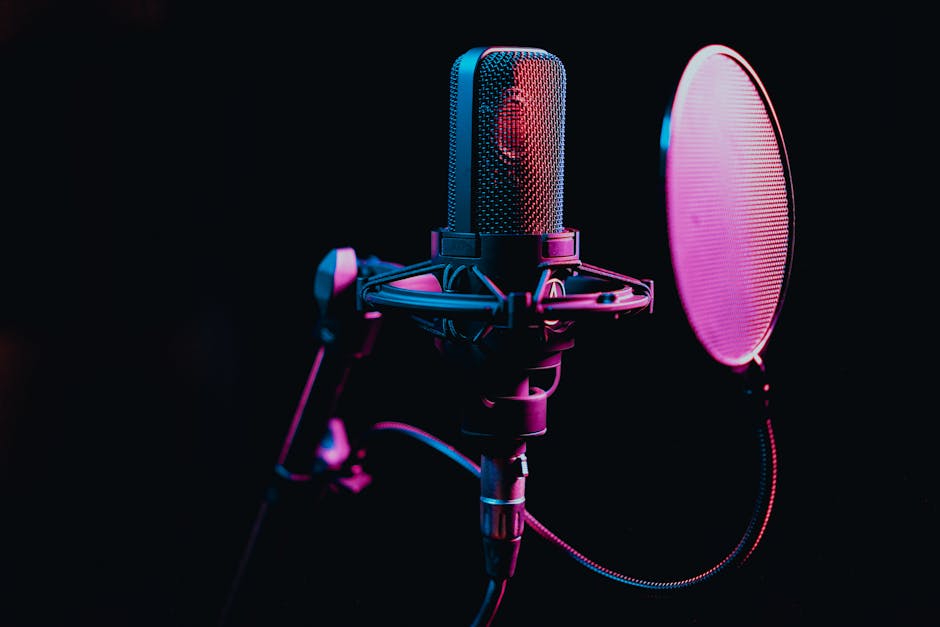My Guide to Choosing the Right Audio Interface for Clear Recordings.
My Guide to Choosing the Right Audio Interface for Clear Recordings
In the quest for professional-sounding audio, few pieces of gear are as pivotal as the audio interface. It’s the silent workhorse bridging the gap between your microphones and instruments and your computer, translating analog signals into digital data your software can understand. But not all interfaces are created equal, especially when your primary goal is to capture recordings with absolute clarity and pristine sound quality. This isn’t just about getting sound into your computer; it’s about preserving every nuance, every detail, and every subtle texture of your performance. After years of navigating the bewildering array of options, I’ve distilled my experiences into this guide to help you cut through the noise and pinpoint the perfect interface that will elevate your recordings from good to truly exceptional. Let’s dive into what really matters when aiming for crystal-clear sound.
Pinpointing Your Recording Needs: The Foundation of Clarity
Before you even begin to look at specifications, the most crucial step in choosing the right audio interface for clear recordings is to deeply understand your own recording environment and aspirations. What exactly are you trying to record? The answer to this question will dictate almost every subsequent decision. Are you a solo vocalist with a single condenser microphone, aiming for transparent vocal tracks? Or perhaps a singer-songwriter who needs to record both vocals and an acoustic guitar simultaneously? Maybe you’re a podcaster needing two XLR inputs for co-hosts, or a small band wanting to capture drums with multiple microphones. Each scenario demands a different set of features from your interface.
Consider the following:
- Number of Inputs: How many microphones or instruments do you plan to record simultaneously? If it’s just one vocal or one guitar, a 1- or 2-input interface might suffice. For a duo, you’ll need at least two. For drums, you could need 8 or more. Remember, having more inputs than you immediately need offers flexibility for future projects without compromising clarity on your current ones.
- Input Types: Do you primarily use XLR microphones (which require phantom power for condenser mics)? Or do you plug in instruments directly (requiring Hi-Z/instrument inputs)? Many interfaces offer “combo jacks” that accept both XLR and 1/4″ TRS/TS connections. Ensure your chosen interface provides the right kind and number of inputs for all your gear.
- Output Needs: Beyond simply hearing your recordings, what outputs do you need? Stereo monitor outputs for your studio speakers are standard. Do you need multiple headphone outputs for collaborators? What about additional line outputs for sending signals to external effects processors or a separate mixer? Clear monitoring is vital for clear recording.
- Portability vs. Studio Rig: Will your interface live permanently in a home studio, or do you need something robust and bus-powered for on-the-go recording? Portability often means fewer inputs and a smaller footprint, but modern portable interfaces can still deliver exceptional clarity.
By clearly defining these practical requirements, you set the stage for selecting an interface that seamlessly integrates into your workflow, allowing you to focus on performance rather not wrestling with technical limitations.
The Heart of the Sound: Preamps, Converters, and Signal Purity
When we talk about “clear recordings,” we’re fundamentally talking about signal purity, and two components within an audio interface are paramount to achieving this: the microphone preamplifiers (preamps) and the analog-to-digital (AD) converters. These are where the magic, or indeed the mischief, happens.
Understanding Microphone Preamps for Uncolored Sound
A microphone preamp’s job is to take the tiny, delicate electrical signal from your microphone and boost it to a usable “line level” without introducing unwanted noise or coloration. For clear recordings, you want preamps that are:

- Transparent: They should faithfully amplify the sound without adding their own sonic character. Some high-end interfaces boast “clean” or “transparent” preamps, meaning they aim for minimal distortion and a flat frequency response.
- Low Noise: A critical factor. High-quality preamps have a low Equivalent Input Noise (EIN) specification. This means they introduce very little hiss, especially when you have to crank the gain for quiet sources or dynamic microphones. Look for EIN figures around -127 dBu or lower for truly clear recordings.
- Ample Gain: Especially if you plan to use dynamic microphones like the Shure SM7B or ribbon mics, which have very low output, you’ll need preamps that can provide a significant amount of clean gain (60dB+). Skimping on gain means either under-recording your signal (leading to noise when boosted later) or needing external preamps, adding complexity and cost.
- Phantom Power: Essential for condenser microphones. Ensure your interface provides a stable +48V phantom power supply to all necessary XLR inputs.
AD/DA Converters: Translating Sound with Fidelity
Once the preamp has boosted your signal, the Analog-to-Digital (AD) converter takes over, transforming that continuous analog waveform into discrete digital data (1s and 0s) that your computer can process. Conversely, the Digital-to-Analog (DA) converter turns the digital playback signal back into analog for your speakers or headphones. The quality of these converters directly impacts the clarity and accuracy of both your recordings and your monitoring.
- Sample Rate: This determines how many “snapshots” per second the converter takes of the analog waveform. Common rates are 44.1 kHz (CD quality), 48 kHz (video/film standard), 88.2 kHz, 96 kHz, and even 192 kHz. While higher sample rates can theoretically capture more detail, the audible difference above 48 kHz or 96 kHz is often debated and requires excellent converters throughout the chain. For clear recordings, 44.1 kHz or 48 kHz is usually perfectly adequate and less demanding on your computer.
- Bit Depth: This determines the dynamic range (the difference between the quietest and loudest sounds) and resolution of each sample. 16-bit is CD quality, but 24-bit is the industry standard for recording. It offers significantly more headroom and a much lower noise floor, making it crucial for capturing clear, dynamic recordings without clipping or introducing digital noise. Always record at 24-bit.
- Dynamic Range & Signal-to-Noise Ratio (SNR): These specifications, often expressed in dB, indicate how effectively the converters can differentiate between the desired signal and inherent noise. Higher numbers (e.g., 110dB+ for AD, 115dB+ for DA) generally indicate better performance and clearer audio capture/playback.
Investing in an interface with high-quality preamps and converters is perhaps the single most impactful decision you can make for achieving truly clear recordings.
Seamless Connections: Input/Output Options for Your Setup
Beyond the core components, the physical connectivity of your audio interface plays a vital role in integrating it smoothly into your recording setup and ensuring a clear, uninterrupted signal flow. The type of connection to your computer, and the various I/O options, all contribute to how effectively you can capture your sound.




Post Comment